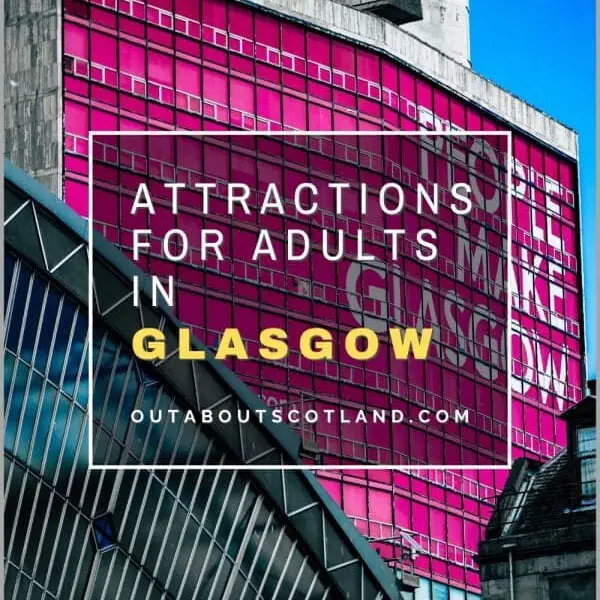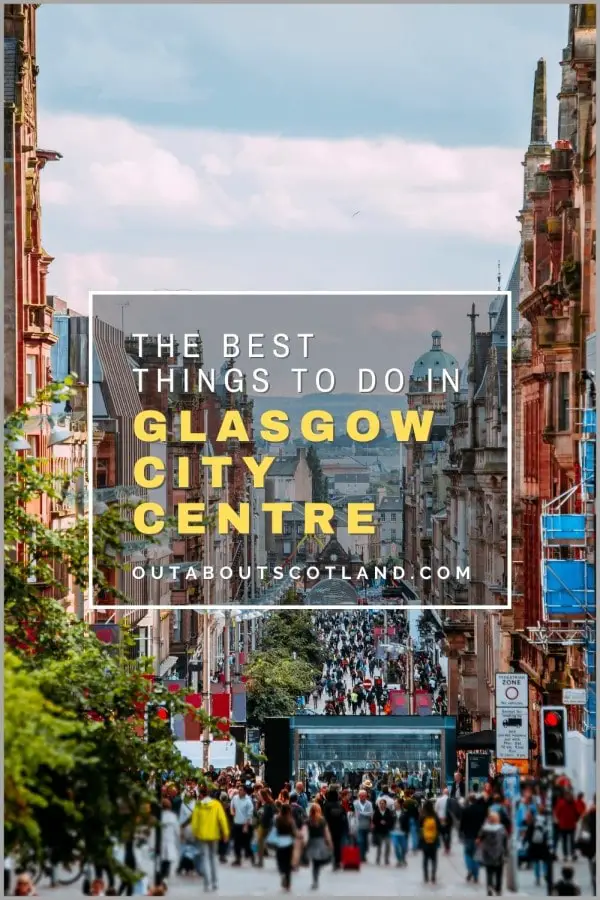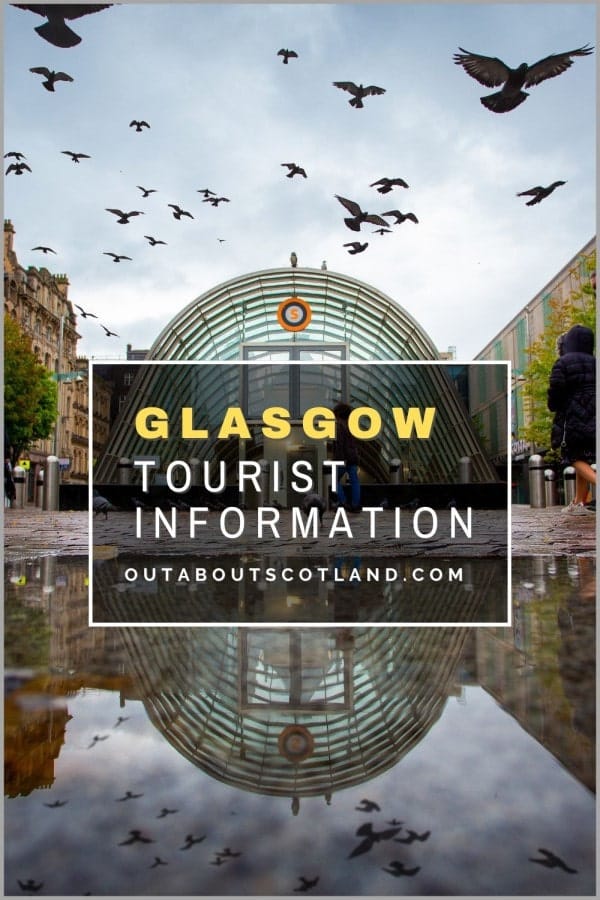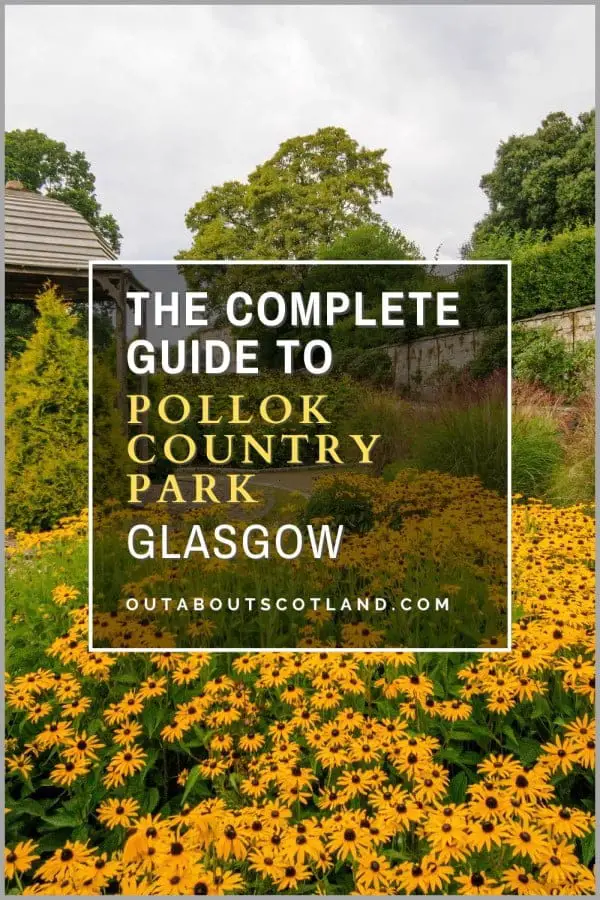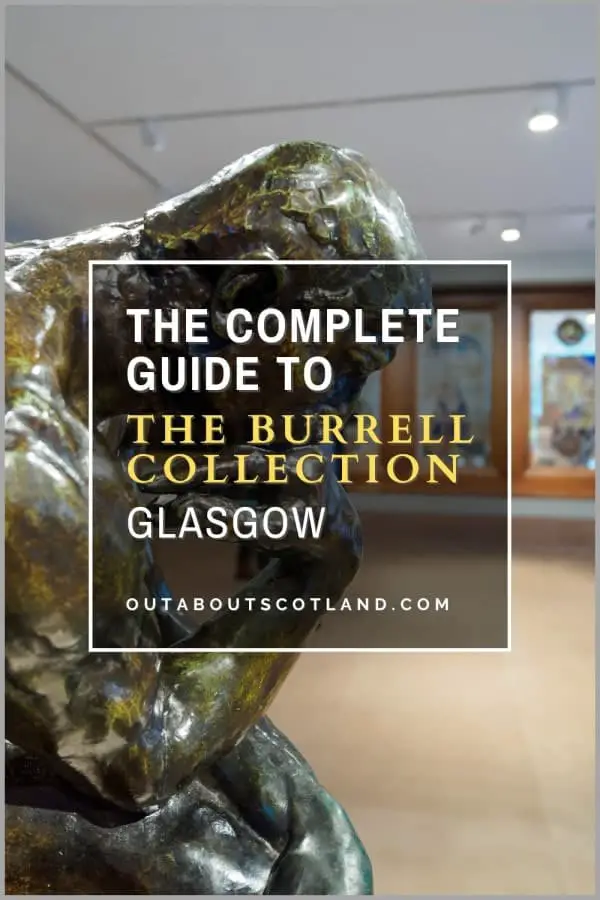Glasgow is the largest city in Scotland and is famous for its superb collection of free attractions that include the Kelvingrove Art Gallery and Museum, the Riverside Museum of Transport, and The Tall Ship, all of which welcome hundreds of thousands of tourists each year.
But there’s more to this city than museums and art galleries, and a visit can easily include expansive parks, bustling shopping centres, and world-class theatres, all located within easy walking distance of each other.
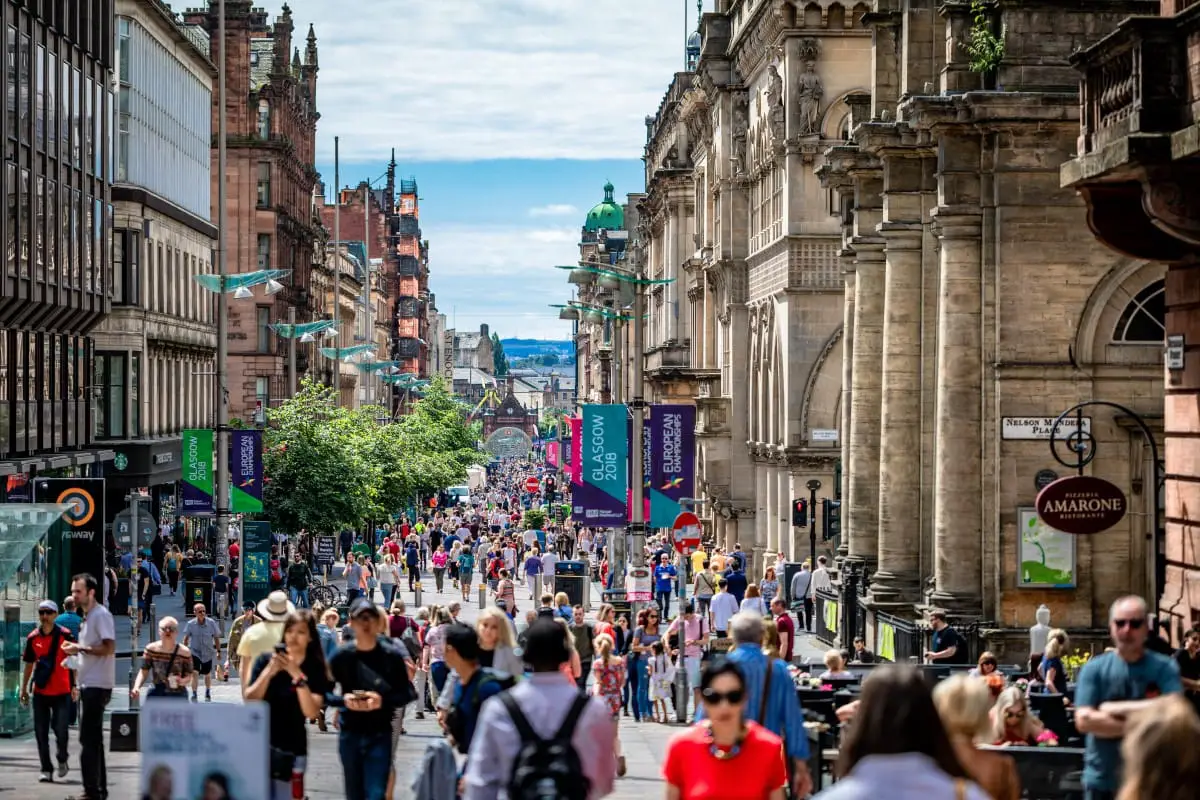
Fun Things to Do in Glasgow for Adults
What’s the first thing that comes to mind when you think of Glasgow? The River Clyde perhaps, or maybe shipbuilding, Billy Connolly, and summer festivals. Or how about Tennent’s lager, enormous city parks, and world-class shopping?
Whatever you think of the city, it’s undeniable that Glasgow is home to a collection of amazing tourist attractions that easily rival those in Edinburgh and are arguably at the same level as many of the top attractions in London.
There’s certainly an exciting atmosphere in Glasgow compared to other British cities. It feels just as modern and has an edge to it that mirrors the southern capital, but it’s without a doubt a friendlier place than the Big Smoke.
The number of cultural venues in Glasgow is nothing short of gob-smacking, and not only is there a fantastic selection of theatres, restaurants, museums, and art galleries, but it’s also a major hub for creative talent. It’s a family-friendly city too, thanks to the number of attractions spread across it, and unlike the rip-off prices you’ll find in some cities (cough, Edinburgh), many of Glasgow’s best attractions are completely free to enter.
The Glasgow Gallery of Modern Art
- Address: Royal Exchange Square, Glasgow, G1 3AH
- Contact details: Telephone 0141 287 3050, email museums@glasgowlife.org.uk
- Out About Scotland Guide: The Glasgow Gallery of Modern Art
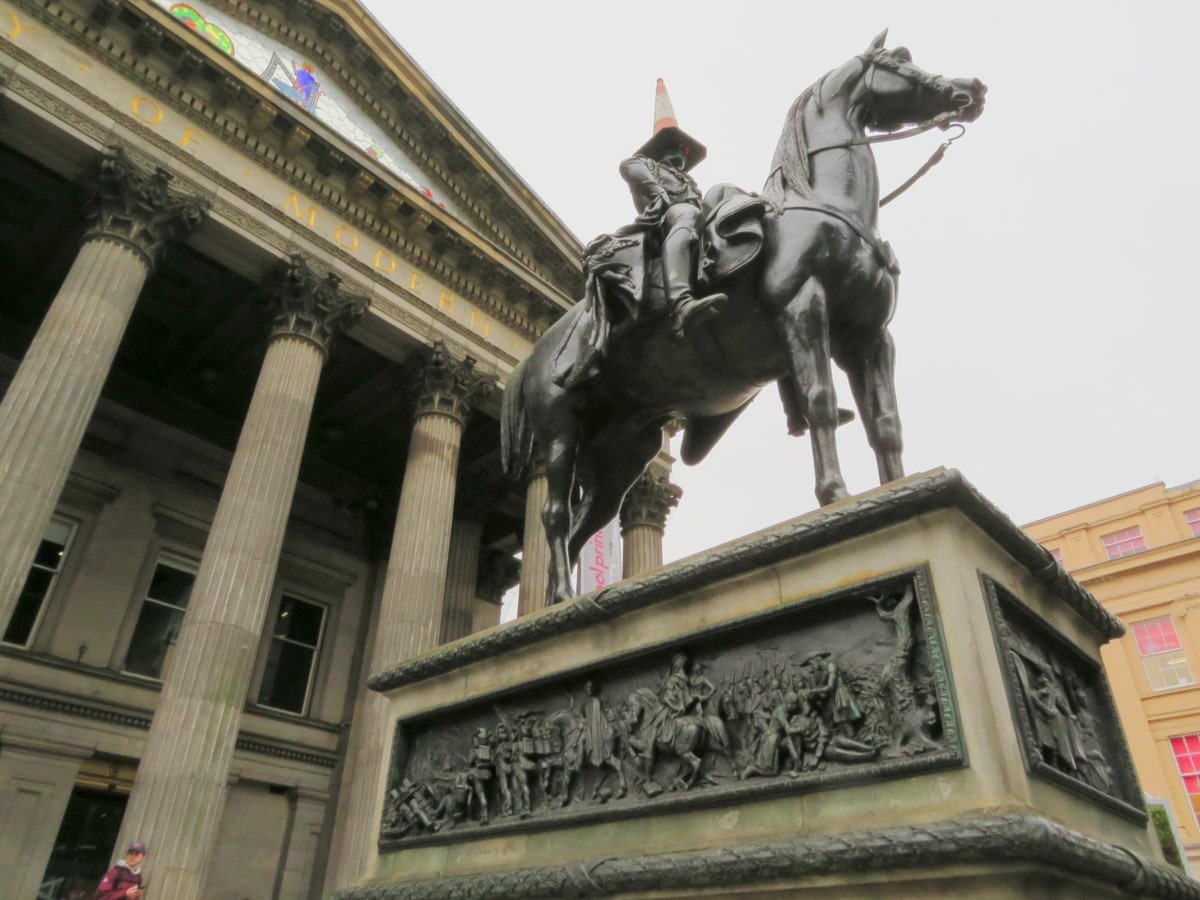
The Glasgow Gallery of Modern Art – or GoMA, as it’s more commonly known, is the city’s primary gallery for modern art, which has been entertaining locals and visiting tourists since 1996.
While the gallery in its current incarnation isn’t old, the building that houses the collection most certainly is, having been originally built in 1778 as the townhouse of tobacco merchant William Cunninghame before being taken over by the Royal Bank of Scotland in 1817.
The building is located in the beating heart of the city, not far from George Square and between Buchanan and Queen Streets – both popular attractions in their own right thanks to the number of shops, malls, bars, and restaurants in them.
The gallery hosts artworks by many of the world’s greatest contemporary artists, and walking around each floor gives access to pieces by Andy Warhol, David Hockney, Margaret Tait, and many others in a range of media that includes paintings, sculptures, photos, and video. But the GoMA isn’t just about showcasing modern art; it’s also used as an educational venue where visitors are free to unleash their inner artist in regular classes and workshops held throughout the year.
Although the GOMA is free to visit, there are frequent premium exhibitions that have an entrance fee, with tickets costing around £5–10. There’s also a good on-site café and a great shop that has lots of art and culture-themed books that you’d struggle to find anywhere else.
George Square
- Address: Glasgow, G2 1DH
- Contact details: NA
- Out About Scotland Guide: George Square
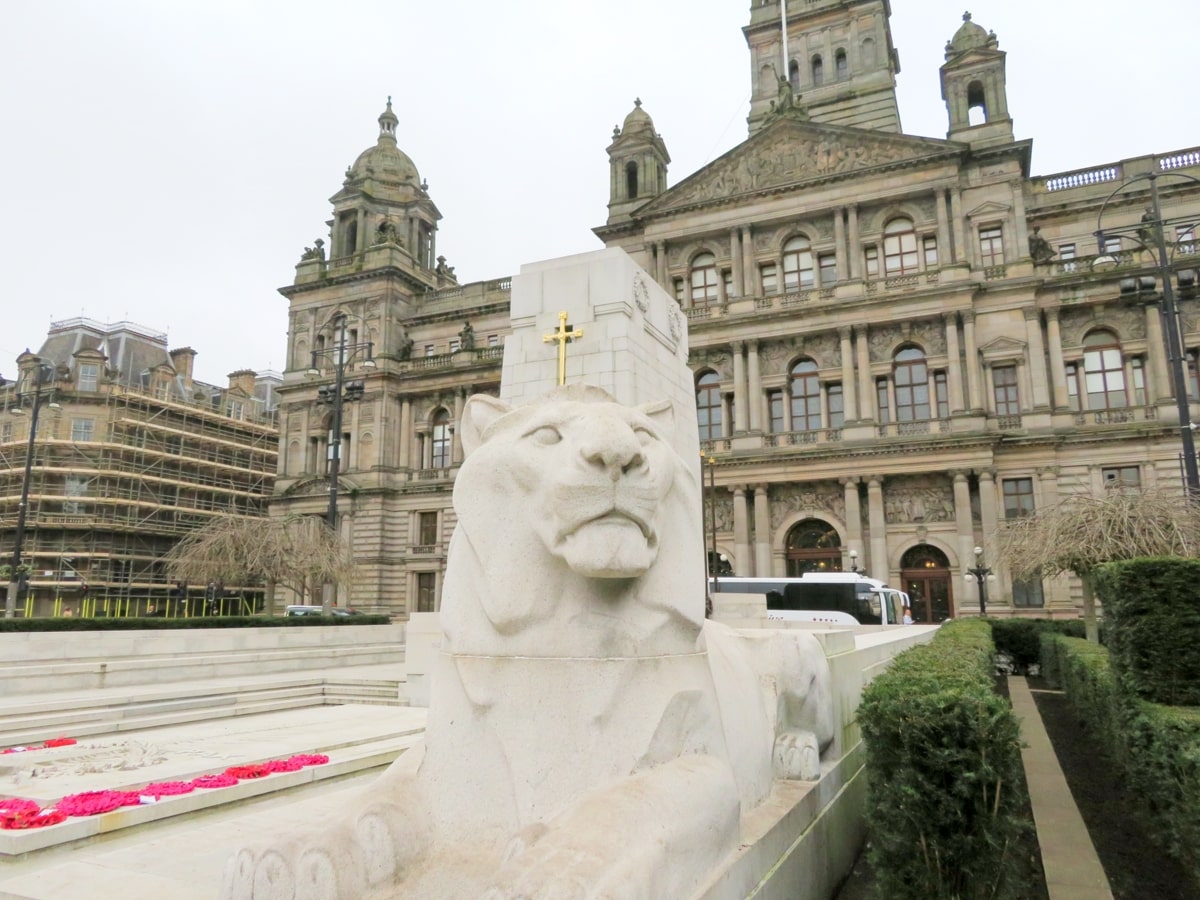
While it might not be the most show-stopping attraction in Glasgow, George Square is definitely a place that’s worth visiting. To be honest, due to its location, it’s actually difficult not to visit Glasgow’s main civic square as it’s situated directly outside Queen Street train station on the junction of Queen Street and George Street, two of the busiest roads in the city.
The focal point of the square is the Scott Monument in the centre, but visitors might like to spend more time looking at the statues surrounding it as they depict famous figures from Scotland’s history including poet Robert Burns and Prime Minister William Gladstone.
There are plaques set into each statue’s plinth that tell you the name and dates of each person that’s memorialised, but if you really want to know more about their history I recommend downloading the official heritage trail guide which explains the full story of each monument in detail. On the eastern side of the square lies the Cenotaph Memorial, which is dedicated to all the Scots that fell in the great wars, while behind it you’ll find the Victorian City Chamber which is the city’s main civic building.
The City Chamber is open for guided tours twice daily, and I recommend popping inside and asking when the next tour is on as you’ll have a fascinating walk around a building that’s absolutely beautiful inside, with lavish amounts of marble and polished mahogany that rivals any other historic building in Glasgow. Tours are free and last around 45 minutes, and you can get tickets by enquiring at the reception desk.
The other reason to visit George Square is for the festivals that are staged there throughout the year, the largest of which are the Piping Live and Glasgow Loves Christmas events, but there are dozens of smaller events held at various times. To find out which events are coming up, check out the eventbrite website.
Glasgow Botanic Gardens
- Address: 730 Great Western Rd., Glasgow, G12 0UE
- Contact details: Telephone 0141 276 1614, email General Manager
- Out About Scotland Guide: Glasgow Botanic Gardens
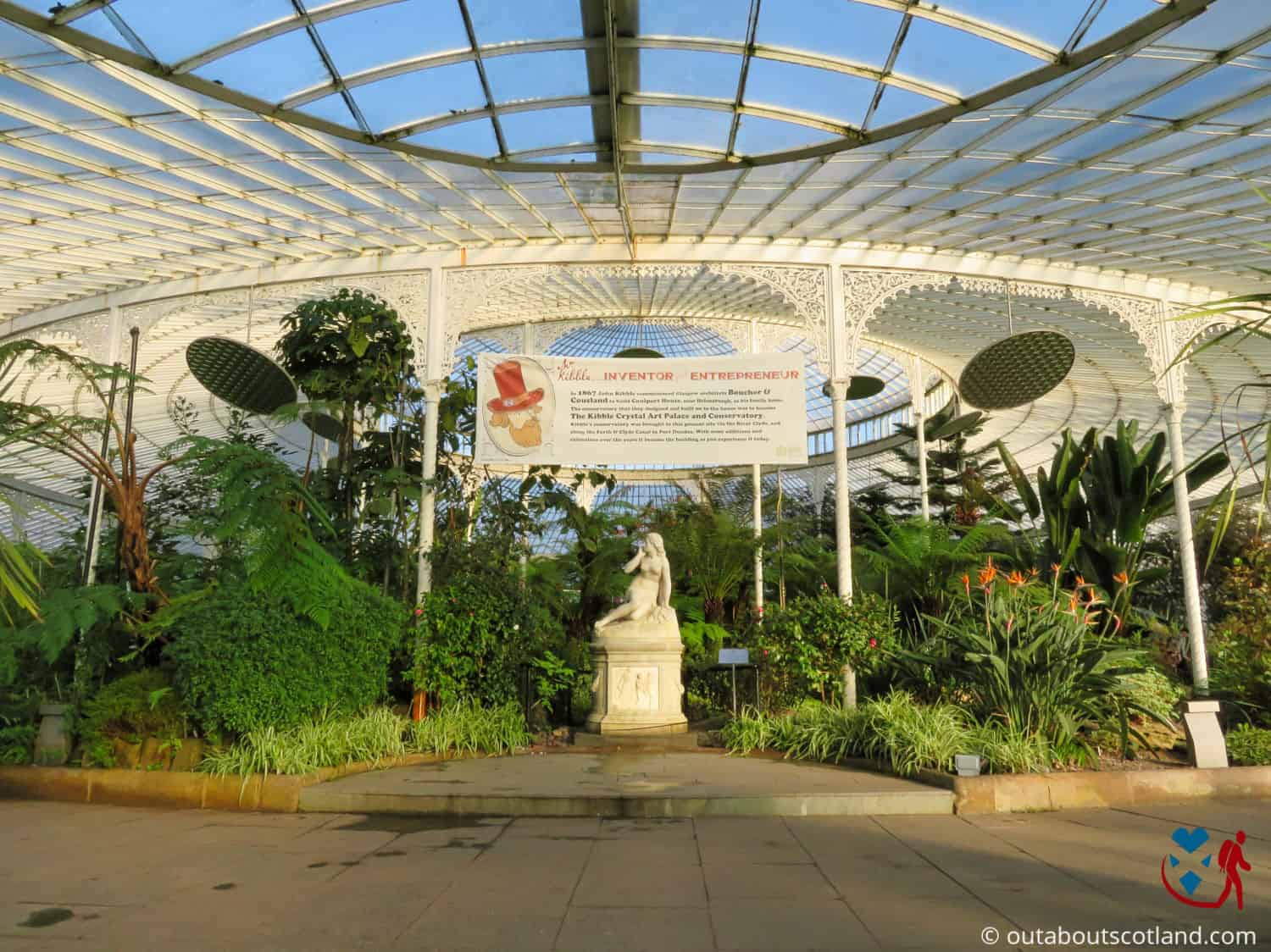
Glasgow Botanic Gardens easily rival those in Edinburgh (high praise, as you’ll know if you’ve been there), and they’re a must-visit if you’re in Glasgow but don’t want to spend all day indoors. The gardens are home to over 12,000 different specimens that are spread across lawns, flower beds, riverside woodlands, and a gigantic conservatory, all of which have been carefully managed since 1842 when they were first opened to the public.
The Victorian conservatory known as the Kibble Palace is particularly impressive because it houses a mini maze, a collection of beautiful statues, and a pond, and it’s also home to Scotland’s national collection of ferns, some of which are over 120 years old.
A second, modern steel-framed greenhouse sits nearby, which isn’t anywhere near as attractive on the outside but more than makes up for it on the inside, where you’ll find a tropical jungle, a copse of exotic trees, and lots of rare flowers collected from all over the world. Another attractive part of the gardens is the walkway along the River Kelvin which is a lovely riverside setting that makes it all too easy to forget you’re in the middle of a bustling urban metropolis.
The Glasgow Botanic Gardens also have a restaurant in the former curator’s house near the front entrance where you’ll be able to sample a delicious range of homemade food.
Glasgow Cathedral
- Address: Cathedral Precinct, Castle Street, Glasgow, G4 0QZ
- Contact details: Tel 0141 552 6891, website contact form
- Out About Scotland Guide: Glasgow Cathedral
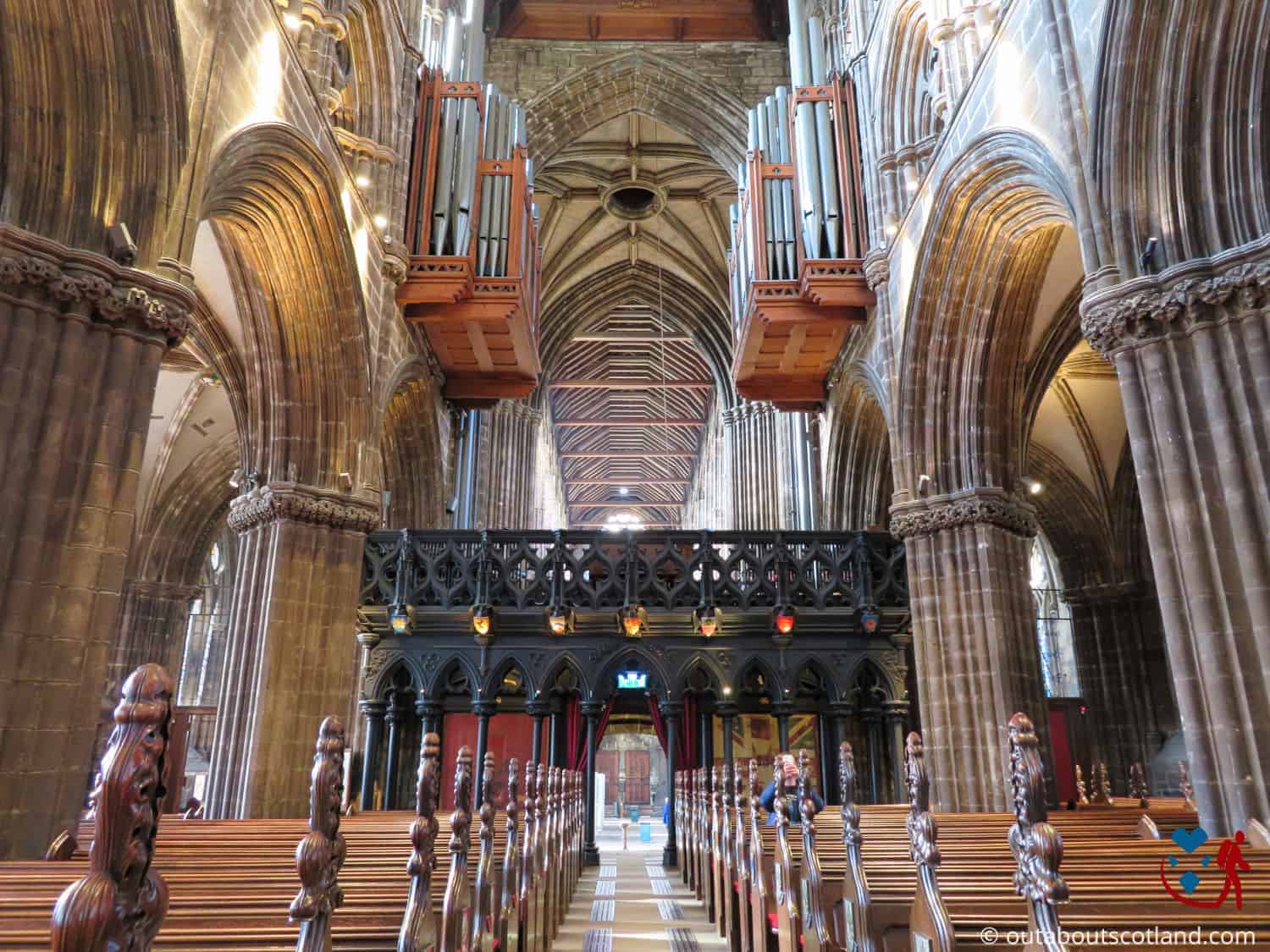
This mediaeval cathedral was built in dedication to Saint Kentigern (also known as Saint Mungo), who is believed to have been buried on the site in AD 612. After his death, worshippers flocked to St. Mungo’s shrine and a small community grew around it. Over time, the community attracted tradespeople and shopkeepers, and within a few hundred years, the city of Glasgow was founded.
The cathedral as we see it today wasn’t finished until the mid-1200s, but take a look at it and you can understand why it took so long to build. It’s beautifully sculpted and mightily impressive – similar to but smaller than York Minster – and it has survived the last 900 years of religious upheavals and world wars unscathed, unlike the majority of large religious buildings in Scotland.
Step inside the nave, and you’ll be amazed by the intricate carvings and the awe-inspiring stained-glass windows. It’s a stunning building, and it’s not really surprising that even today, Glasgow Cathedral remains one of the city’s most-visited attractions.
The cathedral is jointly run by Historic Environment Scotland which offers a self-guided audio tour, but I personally recommend just wandering around the building at your own leisure to soak up the atmosphere. That being said, the audio tour is genuinely interesting and worth purchasing for first-time visitors, but be aware it’s a mobile download, so you’ll need to take headphones with you.
Glasgow Green and the People’s Palace
- Address: Templeton Street, Glasgow, G40 1AT
- Contact details: Tel: 0141 276 0788; email: museums@glasgowlife.org.uk
- Out About Scotland Guide: Glasgow Green and The People’s Palace
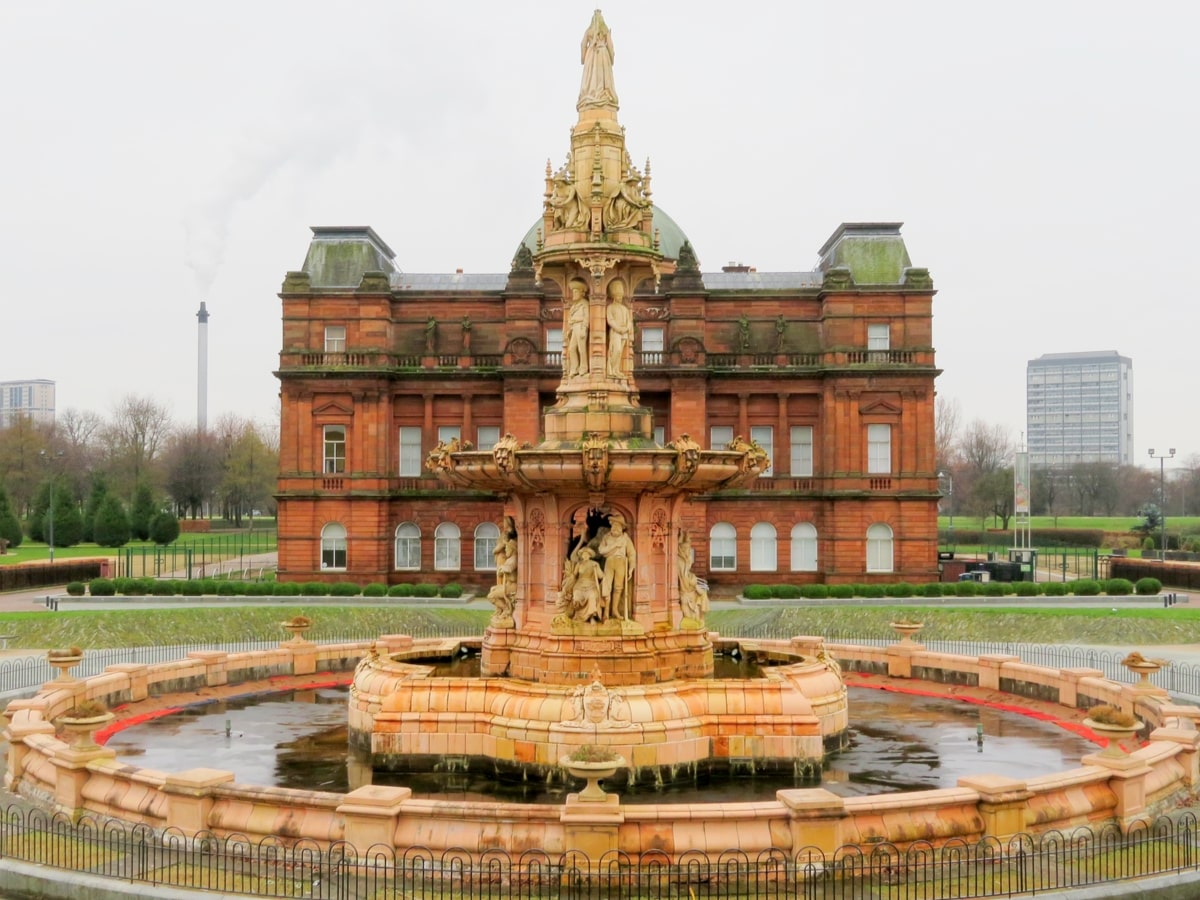
The People’s Palace, located within the grounds of Glasgow Green, opened in 1898 as a cultural centre for Glasgow’s residents, and it housed reading and recreation rooms until it was converted into a social history museum in the 1940s.
Although it fell into near-ruin in the 80s and 90s, it has now reopened and has been renovated to include photography exhibitions, museum exhibits about the city’s history, a café, and the Winter Gardens. The Winter Gardens are similar to a miniature version of Kibble Palace in Glasgow’s Botanic Gardens, and they offer a lovely green oasis whatever the weather is doing outside.
Outside the People’s Palace you’ll find the Doulton Fountain, which was created in 1888 to celebrate the reign of Queen Victoria, while landmarks like Nelson’s Monument can be found in the centre of the park. Other points of interest are the McLennan Arch that sits at the Saltmarket entrance, and various statues that commemorate leading figures from the city’s history.
Glasgow Green is also the venue for some of Scotland’s biggest annual events, with TRNSMT being one of the highlights, along with The World Pipe Band Championships.
The Glasgow Mural Trail
- Address: See the City Centre Mural Trail website for current mural locations
- Contact details: NA
- Out About Scotland Guide: The Glasgow Mural Trail
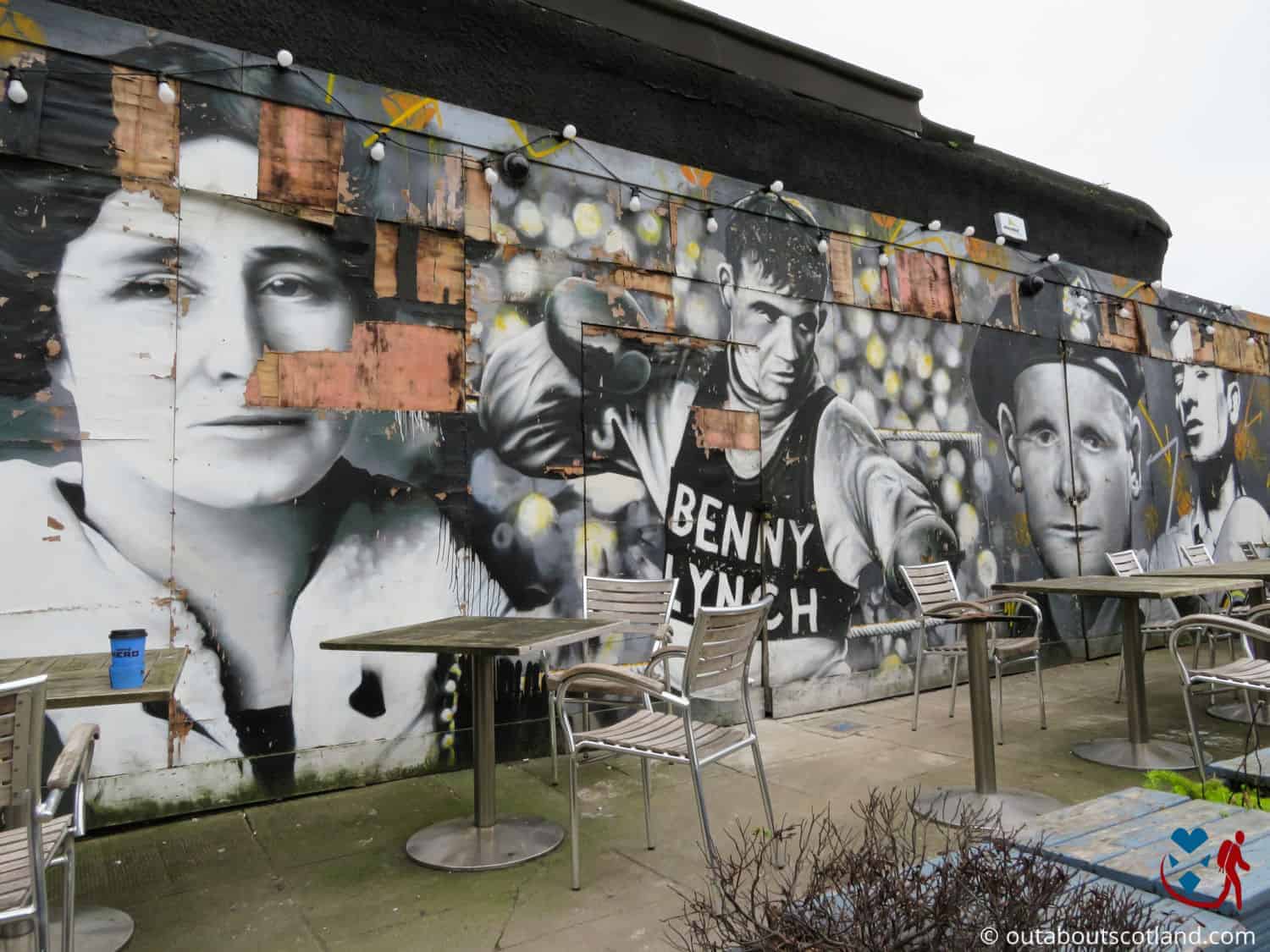
The City Centre Mural Trail isn’t really an attraction as such, but it draws thousands of tourists each year who search the city streets in the hopes of finding new artworks. The mural trail has gained something of a cult following among Glasgow’s visitors because it’s one of the few ways to see the more offbeat
areas that are never mentioned in guidebooks.
The Glasgow Mural Trail also allows Scotland’s best young artistic talent to display their art in a collection of scenes that highlight the role that Glasgow has played in Britain’s history. Many of these murals are absolutely enormous, and most are off-the-wall (pardon the pun). Think along the lines of Banksy but bigger and more colourful, and you won’t go far wrong.
While it’s possible to just wander around the city and stumble on the occasional mural here and there, if you want to see them all you need to head to the official Glasgow Mural Trail website and check out their updated map.
Don’t be surprised if, during your walk, you find the occasional mural has suddenly gone missing, as they’re designed to be replaced by new murals whenever the walls they are painted on are demolished.
The Hunterian Museum
- Address: The Gilbert Scott Building, The University of Glasgow, Glasgow, G12 8QQ
- Contact details: Tel: 0141 330 4221, email: hunterian-enquiries@glasgow.ac.uk
- Out About Scotland Guide: The Hunterian Museum
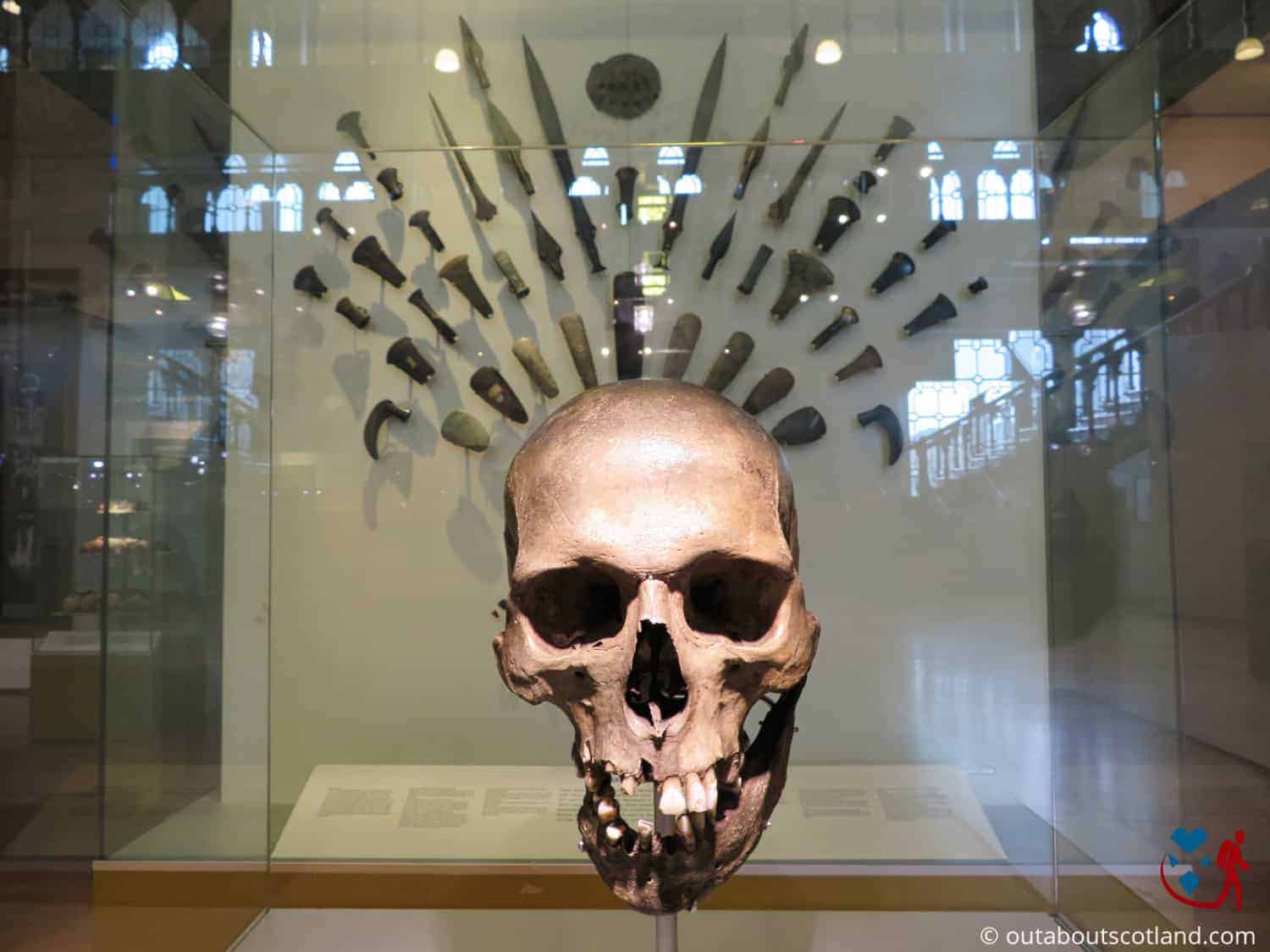
The Hunterian Museum is located in the 150-year-old Gilbert Scott Building in the University of Glasgow, officially the fourth-oldest university in the English-speaking world. To find it, head to the iconic cloisters and follow the staircase that leads towards Bute Hall, where you’ll find the museum directly opposite.
This fascinating collection of exhibits opened in 1807 when private collector and anatomist William Hunter gifted his life’s work to the university. Since then, it has expanded into a museum that covers fields of study including Roman history, dinosaurs, evolution, metals, minerals, medicine, and much more.
Turn right from the main entrance and you’ll enter the main hall, a huge area set over 2 floors that contains the bulk of the artefacts, while the space opposite the main entrance houses stonework from the Roman Antonine Wall.
Each display case is meticulously arranged and full of interesting objects, from meteorites to dinosaur bones and ancient human tools to the first medical instruments. Admittedly, it’s a far smaller collection than you’ll find at Kelvingrove, but it’s no less interesting for it.
Like all the best attractions in Glasgow, the Hunterian Museum is completely free to enter, and as it’s located close to Kelvingrove, it’s easy to combine a visit to both attractions in one day – perfect if you’re trying to entertain bored children when it’s raining.
Kelvingrove Art Gallery and Museum
- Address: Argyle Street, Glasgow, G3 8AG
- Contact details: Tel 0141 276 9599, email museums@glasgowlife.org.uk
- Out About Scotland Guide: Kelvingrove Art Gallery and Museum
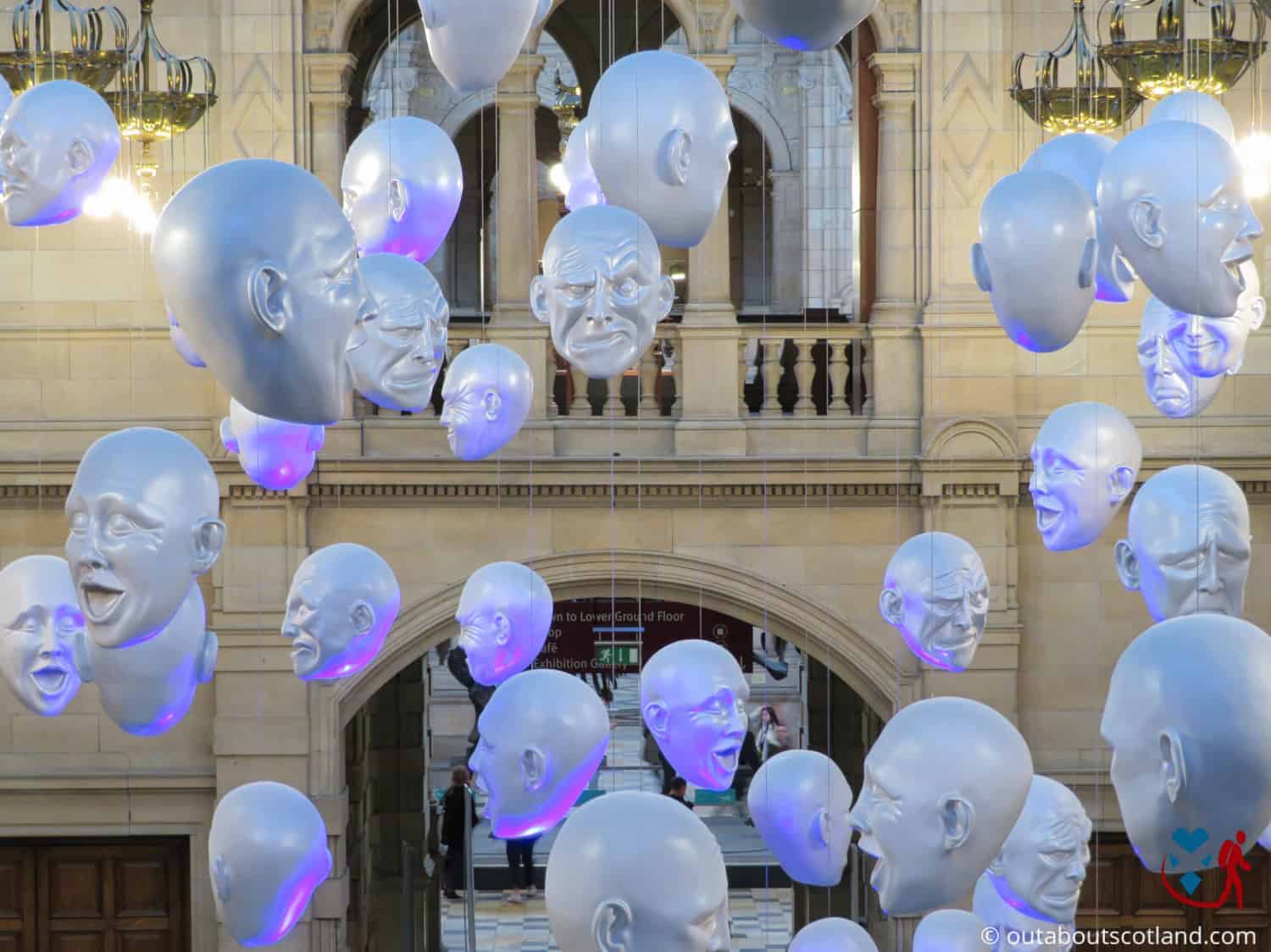
This attraction, located in Kelvingrove Park – is one of the city’s highlights and absolutely has to be at the top of your list of places to visit in Glasgow. Set inside an ornate red sandstone building, Kelvingrove Art Gallery and Museum has been wowing visitors since opening in 1852.
During a visit, you’ll be taken on a journey through ancient Egypt, the animal kingdom, modern art, Scotland’s cultural heritage, and much more.
What I like most about Kelvingrove is that it’s basically two attractions in one, with art galleries featuring collections of fine art, and exhibition halls that showcase artefacts from the fields of history and science. The curators have arranged each gallery in a way that’s enjoyable for all ages, and adults will be entertained just as much as children, which makes this free attraction a perfect venue for a day out.
Although there are lots of permanent fixtures (like the restored Spitfire hanging from the ceiling of the East Court), many exhibits in the Life (showcasing natural and human history) and Expression (featuring fine art) galleries are rotated, so going back for another visit later in the year always offers something new to look at.
Kelvingrove Art Gallery and Museum currently displays an incredible 9,000 exhibits across 22 state-of-the-art galleries, with the fine art collections widely recognised as among the best in Europe. These galleries house works by many of the world’s most famous artists including Leonardo da Vinci, Rembrandt, Renoir, and Glasgow’s favourite home-grown designer, Charles Rennie Mackintosh.
Although there’s no on-site parking, Kelvingrove features a café and gift shop, and as it’s located in Kelvingrove Park, it’s easy to let children run wild in the play park after your visit.
Kelvingrove Park
- Address: Kelvingrove Park, Kelvin Way, Glasgow
- Contact details: Glasgow City Council website
- Out About Scotland Guide: Kelvingrove Park
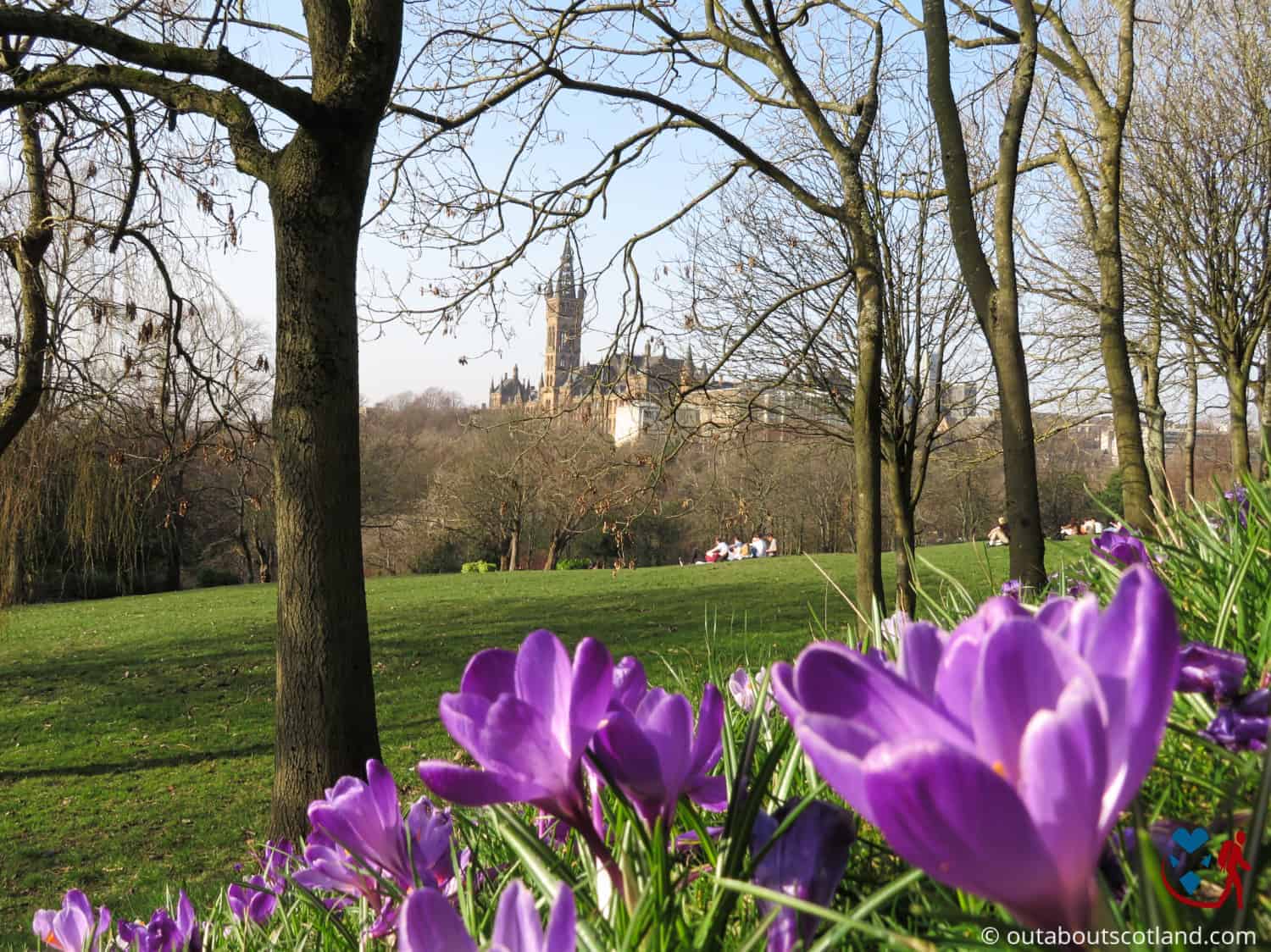
As mentioned above, Kelvingrove Park is home to the Kelvingrove Art Gallery and Museum, one of Scotland’s most-visited free tourist attractions, and a walk around one wouldn’t be complete without a visit to the other.
This Victorian park covers an expansive 85 acres, and it’s worth exploring whether you want to look at the monuments dotted around it or walk along the miles of footpaths that thread their way across the grass areas, River Kelvin, play parks, and sports venues.
Walking north along Kelvin Way will take you to the Kelvingrove Lawn Bowls and Tennis Centre that was used for the 2014 Commonwealth Games, and the Kelvingrove skate park is nearby if you have children with a love of skateboarding. There are also three children’s play parks, and there are a couple of cafés if you fancy a caffeine fix away from the claustrophobic city centre.
Kelvingrove is a very accessible park, and the majority of paths are well-maintained tarmac so it’s an accessible space for pushchairs and wheelchair users. The path that runs alongside the River Kelvin as it meanders towards the River Clyde is arguably the highlight, but the path leading to the ornate Stewart Memorial Fountain comes in a close second.
If you find yourself in the mood for a longer walk, The Kelvin Walkway is an oasis in the heart of Glasgow that’s home to geese, kingfishers, foxes, and even otters. The walkway starts at Kelvingrove Park tennis courts and follows the river for six miles to Dawsholm Park, situated to the northwest of Glasgow city centre.
The Glasgow Necropolis
- Address: Castle St, Glasgow, G4 0UZ
- Contact details: email chair@glasgownecropolis.org
- Out About Scotland Guide: The Glasgow Necropolis
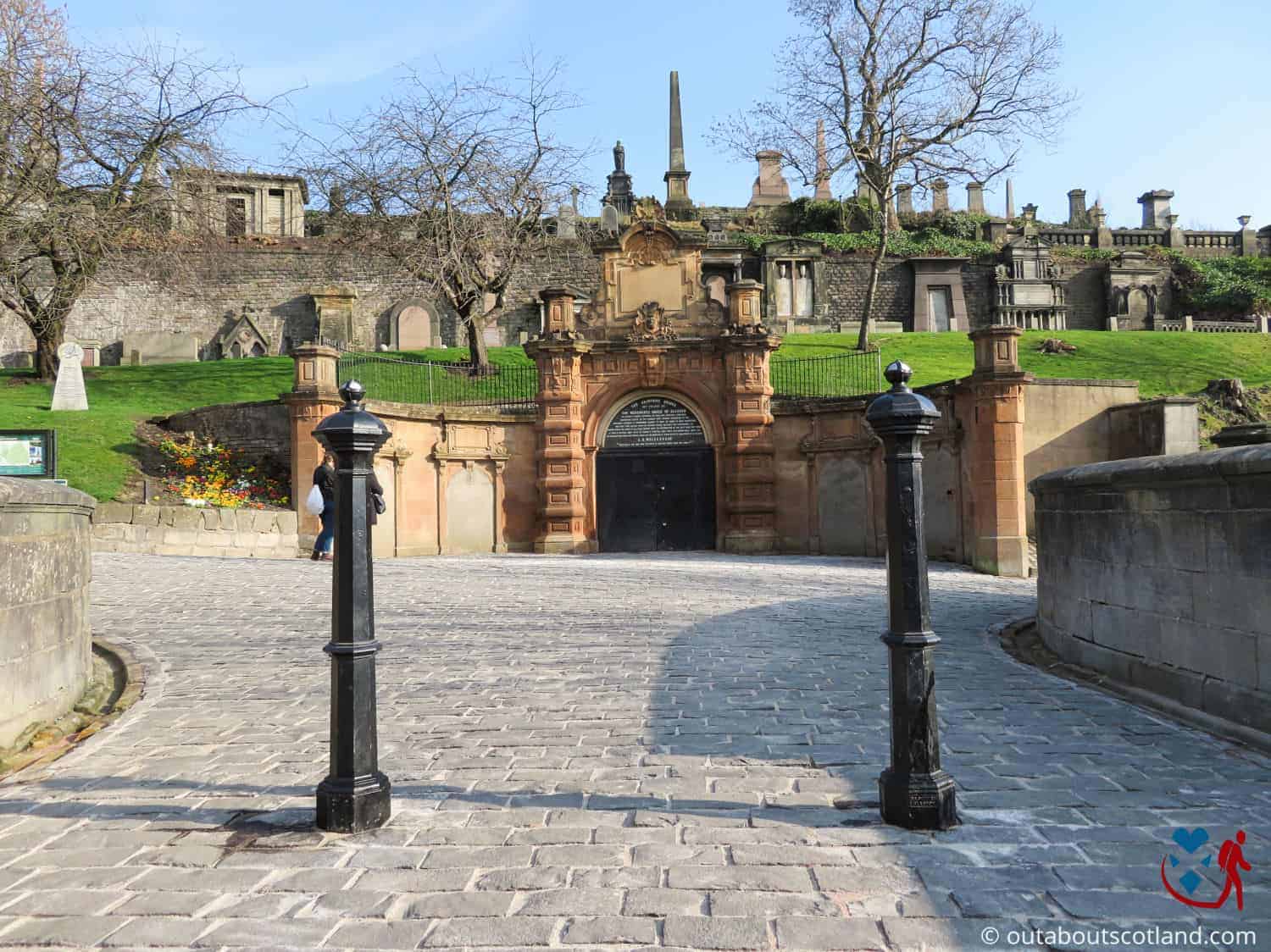
The Glasgow Necropolis is the final resting place for over 50,000 Glasgow residents, many of whom were instrumental in forging Scotland into the country it is today. Across this vast 37-acre site you’ll find a dizzying number of Gothic tombs, monuments, and gravestones, with a spiderweb of paths threading their way between them.
There are around 3,500 monuments at the Necropolis, and most of them are very decorative, but possibly none more so than the very first monument that was installed there for the 16th-century preacher, John Knox. Knox’s monument sits on a hill overlooking Glasgow Cathedral, and it’s a great spot to get an elevated view of the city. If you haven’t already visited the cathedral, you’ll find it’s just a 5-minute walk from the Knox monument.
One thing I recommend you do before setting off to explore the Glasgow Necropolis is to download a map of the site and then go on a hunt for the graves of famous Scots such as John Knox and Charles Rennie Mackintosh, because it makes the whole experience even more interesting.
Failing that, you might consider joining one of the free tours provided by the Friends of Glasgow Necropolis. These tours are extremely popular so I recommend taking a look at their website before visiting to see if there are any available spaces.
The Riverside Museum of Transport
- Address: Pointhouse Place, Glasgow, G3 8RS
- Contact details: Tel 0141 287 2720, email museums@glasgowlife.org.uk
- Out About Scotland Guide: The Riverside Museum of Transport
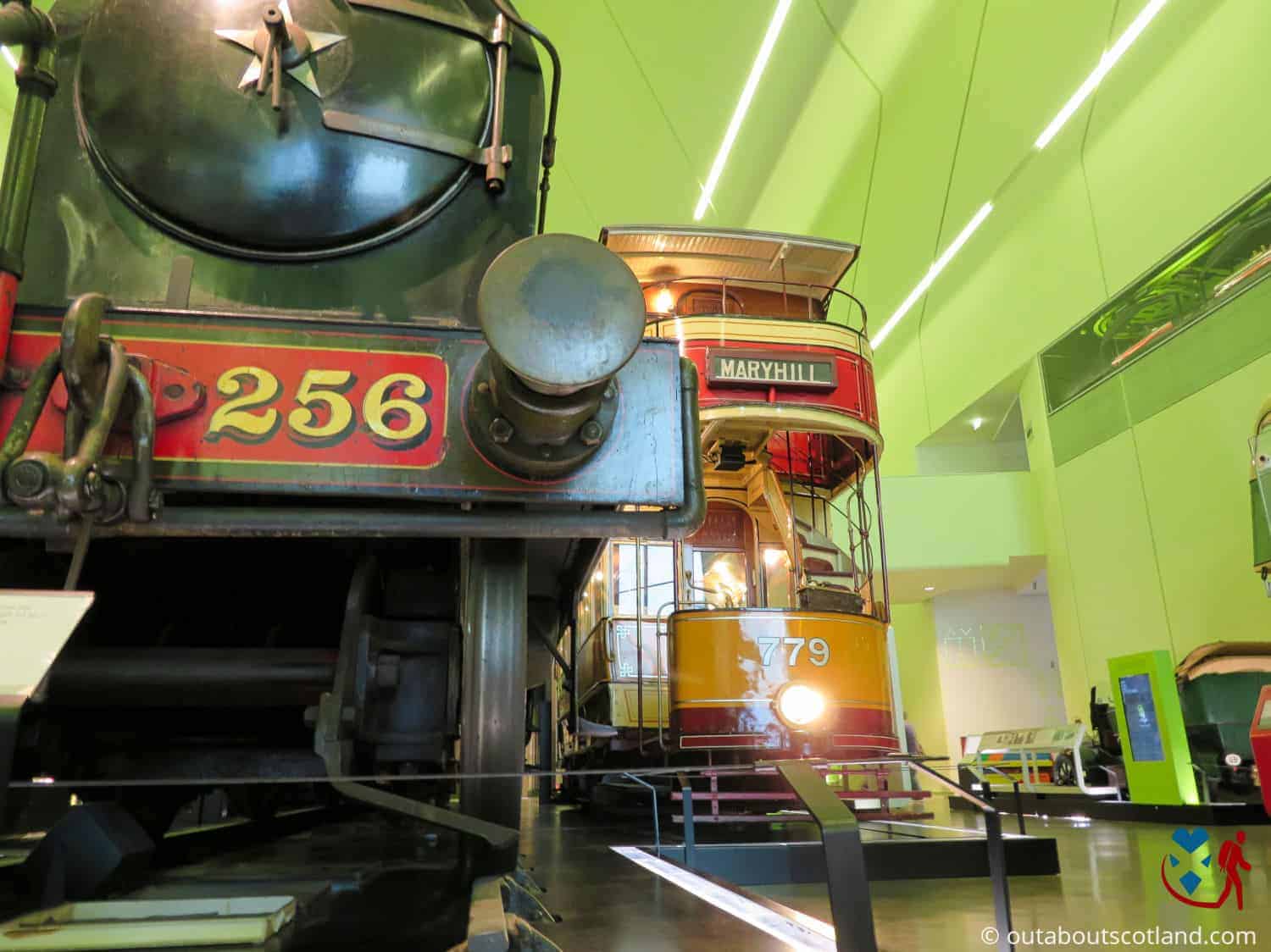
This really is a first-class tourist attraction because not only is it situated next to The Tall Ship – one of Glasgow’s most-visited attractions – but it’s full of the greatest achievements in motoring history. Take a walk around this museum, and you’ll find pristine examples from Porsche, Bentley, and Rolls-Royce, as well as more down-to-earth cars like the Ford Anglia and VW Beetle.
You can dust your flares off and imagine being back in control of a 1970s Ford Cortina, or strap on your Deeley bobbers (if you’re under 40, Google it) and pretend you’re manning the helm of a Sinclair C5.
But it’s not just cars on show. Raleigh Choppers, Penny Farthings, steam and diesel trains, ambulances, trams, horses, and carriages, if it’s been used for transport, there’s a good chance an example of it is somewhere to be found in this museum.
The best part of the attraction is a recreation of an entire Glasgow street inside the main hall, complete with shops, a café, a subway station, and even an old-fashioned spit-and-sawdust pub. The entire display is very realistic, and you can walk inside some of the shops for an authentic taste of what life would have been like in the last century.
The Scottish Event Campus Centre
- Address: Glasgow, G3 8YW
- Contact details: Tel 0141 248 3000
- Out About Scotland Guide: The SECC
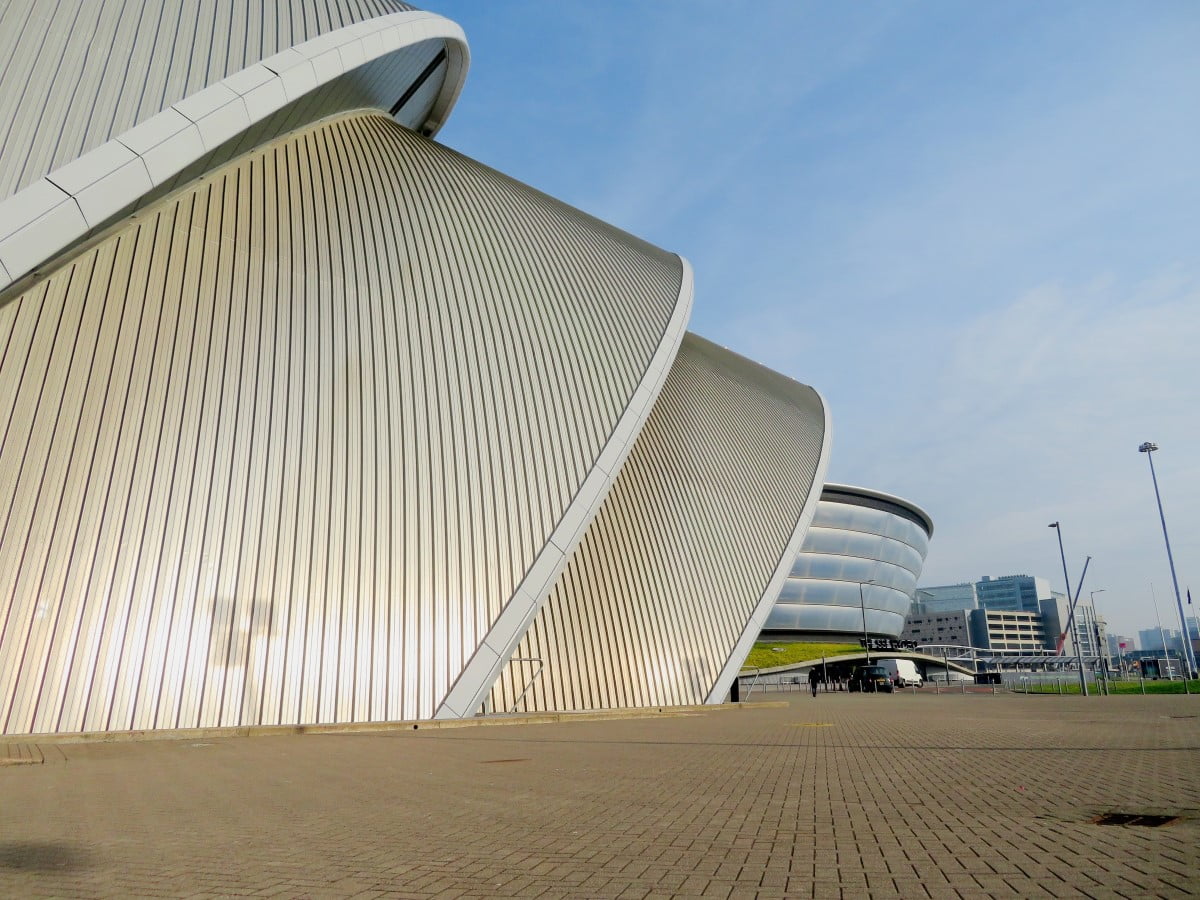
The Scottish Event Campus Centre isn’t actually a tourist attraction, but it’s certainly somewhere that’s worth taking a look at if you find yourself wandering along the River Clyde.
The SECC is located a mile east of the Riverside Museum, where it’s divided into three main buildings: the Armadillo, the Hydro, and the SEC Centre. Each of these buildings serves as a stage for various events throughout the year, primarily music concerts but also a number of exhibitions.
It won’t take long to walk from the Riverside Museum or the Tall Ship to the SECC (maybe 20 minutes), and it’s an enjoyable way to see the River Clyde, with a bonus being that there are plenty of other things to see in the immediate area.
Directly opposite the Hydro is the Finnieston Crane, which is one of Glasgow’s most famous landmarks. The enormous crane is one of the few reminders that at one time Glasgow was one of the world’s largest shipbuilders, which at its peak employed more than 70,000 workers in 19 shipyards. The Glasgow Science Centre and Festival Park lie on the opposite side of the river, and the Clydeside Whisky Distillery is situated to the west of the SECC car park.
The St. Mungo Museum of Religious Life and Art
- Address: Castle Street, Glasgow, G4 0RH
- Contact details: Tel. 0141 276 1625
- Out About Scotland Guide: The St. Mungo Museum
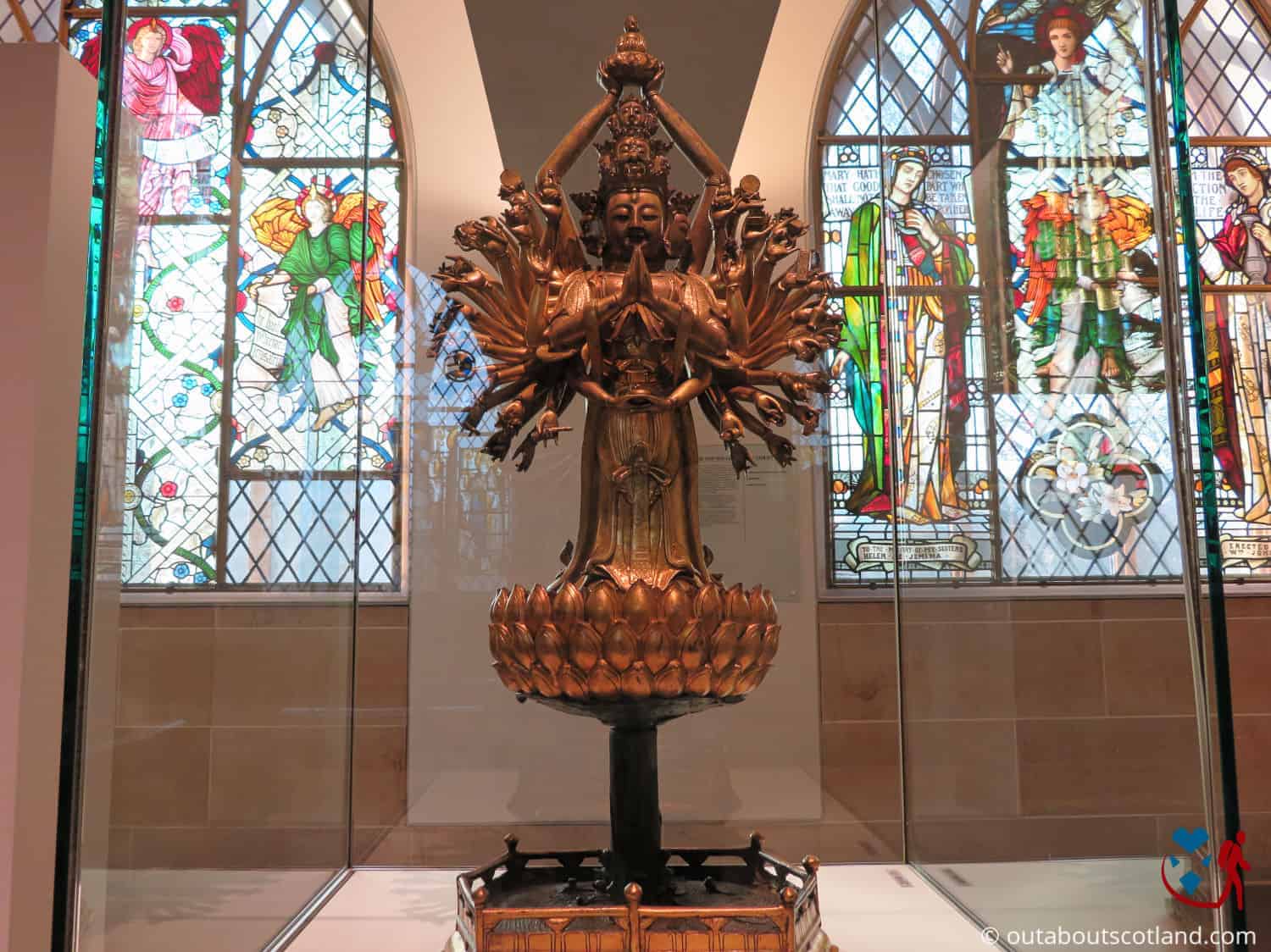
This is another Glasgow Museum that’s well worth visiting, not just because it’s free and situated next to the cathedral, but because it’s genuinely interesting, whether you’re religious or not. I have to say I have absolutely no interest in religion, but I really enjoyed my visit to the St. Mungo Museum and I reckon all visitors will find it fascinating regardless of their background.
One thing worth mentioning is the fact that this is the only museum in the world that’s solely devoted to the subject of religion, so you’re unlikely to find a collection of artefacts like this anywhere else in Scotland.
Take a walk around the museum and you’ll see a Nigerian tribal screen sitting next to a statue of the Indian god Shiva, and Buddha statues in front of Christian stained glass windows. Of course, the biggest section is devoted to St. Mungo himself, so you can’t fail to learn a little about the saint and his links to Glasgow during your visit.
The musuem features a good café with outside seating, and Glasgow Cathedral and the Necropolis are both located within a few minutes walk.
The Tall Ship
- Address: 150 Pointhouse Place, Glasgow, G3 8RS
- Contact details: Tel 0141 357 3699, website contact form
- Out About Scotland Guide: The Tall Ship
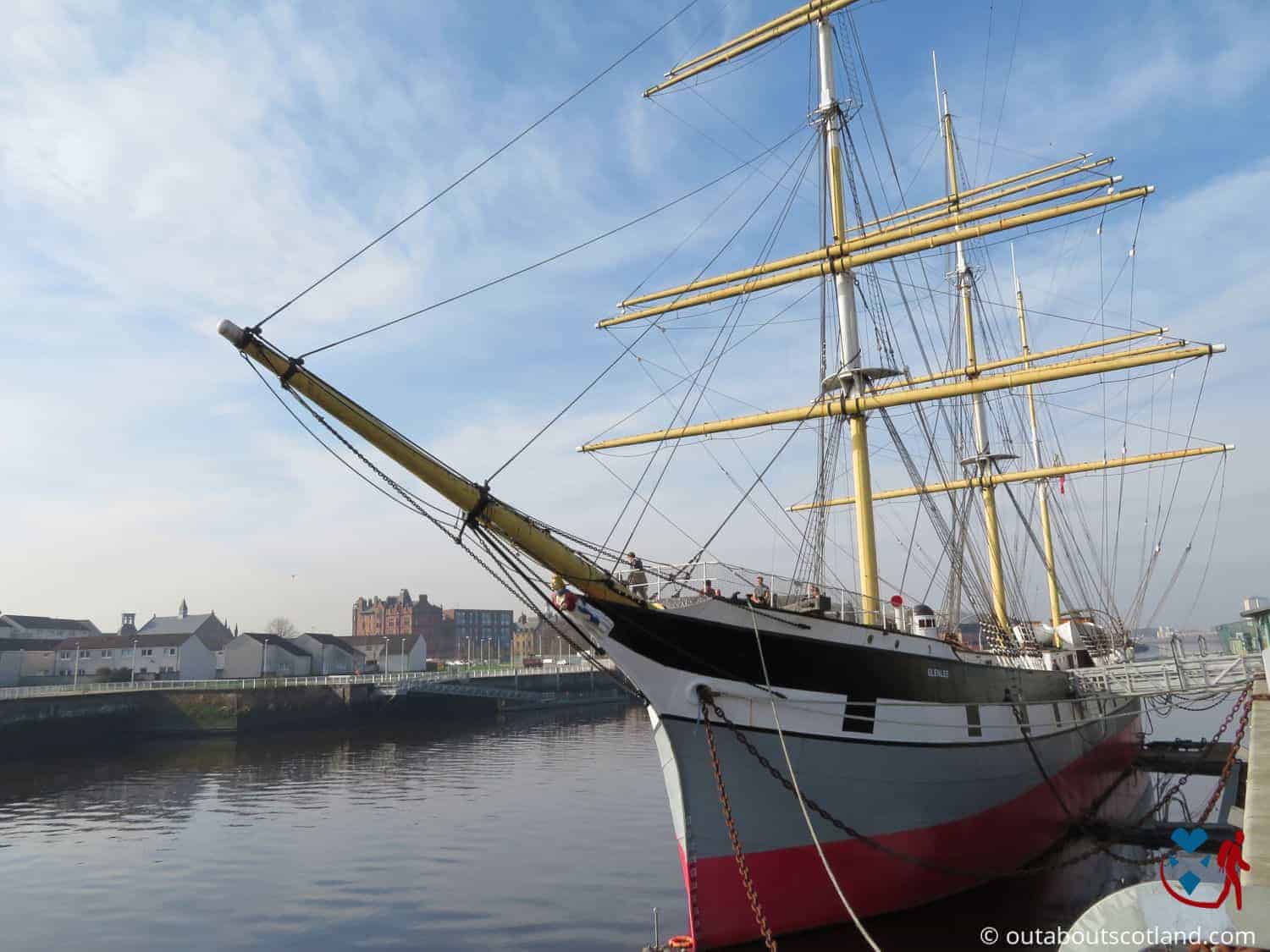
If you step outside the Riverside Transport Museum, you can’t fail to miss the enormous sailing ship moored next to it. This 19th-century three-mast ship is the Glenlee, and she offers a glimpse into what life was like onboard a sailing ship over one hundred years ago.
The Glenlee is one of only five Clyde-built tall ships that are still afloat today, and she’s open to visitors to explore every nook and cranny to discover why these vessels were used so extensively in the Victorian era.
It took six years to fully restore the ship, and the owners have done a superb job with everything looking new and ship-shape, from the main deckhouse all the way down to the cargo hold. A surprising feature of the Glenlee is that it has an entire cafeteria and gift shop on the 2nd-level deck. The fact that the café and shop only take up half of the floor space gives you some idea of just how big the vessel actually is.
The lower decks have a children’s play area and an education room complete with mini-cinema, and there are information panels on the walls to tell you about the ship, the crew that manned her, and Glasgow’s shipbuilding heritage.
The University of Glasgow
- Address: The University of Glasgow, Glasgow, G12 8QQ
- Contact details: Telephone 0141 330 4221
- Out About Scotland Guide: The University of Glasgow
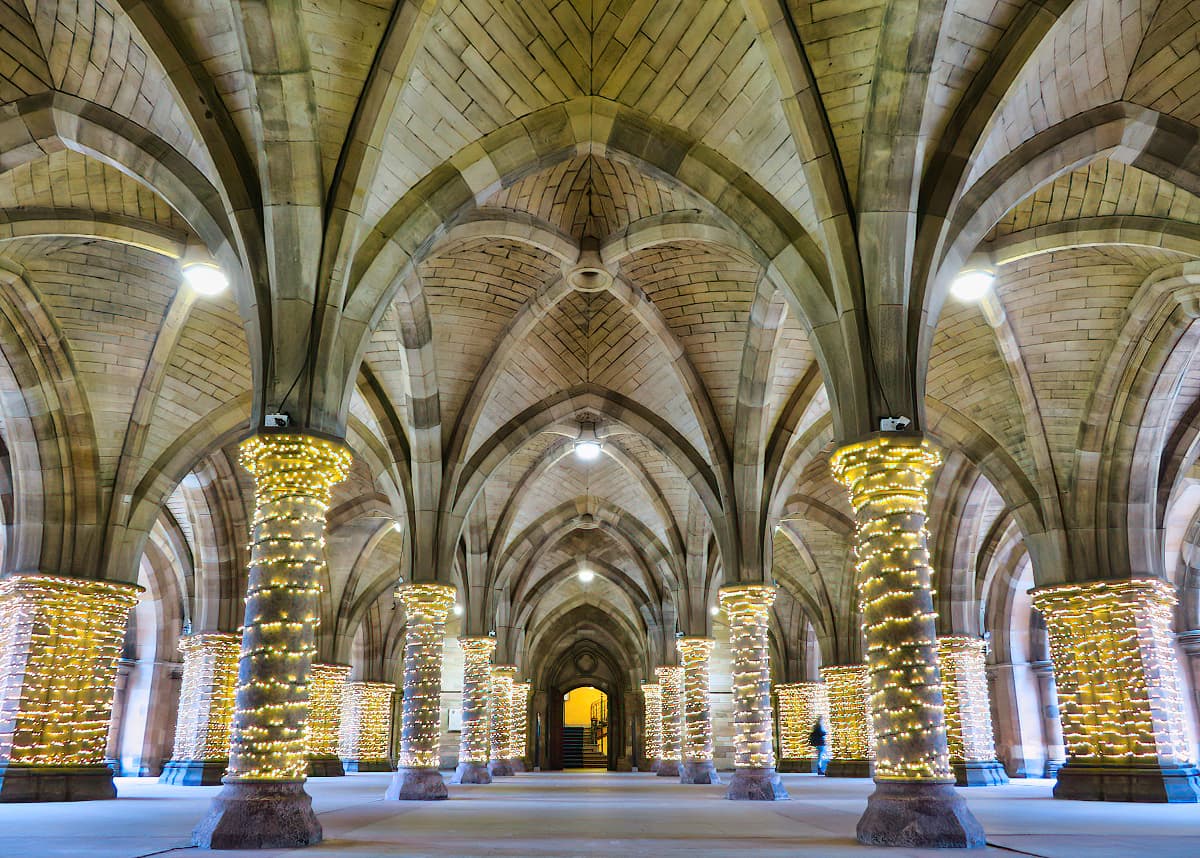
Like the SECC, the University of Glasgow isn’t a tourist attraction in the truest sense, but it’s somewhere that has become part and parcel of every guided tour around the city.
The University of Glasgow is the 4th-oldest university in the world and features the most striking buildings in Glasgow, which look more like a cathedral than a place of education. These beautiful buildings are located close to Kelvingrove Park which you can walk to in just 10-minutes, so it’s well worth taking the time to visit the university if you’ve already been to Kelvingrove Museum
The university is an extraordinarily atmospheric place that’s full of Gothic towers and hidden archways, and it absolutely oozes with history, as you’d expect having been founded all the way back in 1451.
When you visit, you’ll notice a number of information boards that point you in the direction of the Hunterian Museum and the Hunterian Gallery, but there’s also a university gift shop and a couple of cafés on the campus.
The public can explore the exterior of the buildings at their leisure, but as it’s a working university, it’s not possible to enter all the buildings as a tourist. My advice to make the most of your visit is to check out the official university website which has a pre-made self-guided tour that you can follow, as well as details on how to book a guided tour.
The Best Tours in Glasgow
Glasgow is an amazing city to visit, but it can also be a confusing place due to its sprawling layout, which sees many of its top attractions spread across the city centre and beyond. Unlike Edinburgh, which has virtually all of its attractions located within walking distance of each other, a sightseeing tour of Glasgow means you’ll have to combine foot power with buses, subways, and possibly taxis.
So what can busy visitors do to maximise their time? The obvious answer is to join a guided tour with an expert who knows the city like the back of their hand. They’ll be able to take you around all the top attractions on the most direct route, saving you time and, in many cases, money.
That being said, not everyone likes being part of a tour group, which is why another option – the hop-on, hop-off tour bus – is one of the most popular ways for visitors to see the city. The following list features a selection of the best-reviewed tours on Get Your Guide (one of the biggest tour booking services) that are held daily, along with options for tour buses.

Glasgow: City Centre Guided Walking Tour – Of all the tours you can choose from, this is the pick of the bunch for visitors that want a general overview of the city.
The tour starts outside the grand City Chamber in George Square and continues around the main attractions including the cathedral, the Necropolis, Glasgow Green, and many more. BOOK NOW.
City Sightseeing Glasgow: Hop-On Hop-Off Bus Tour: Purchasing a ticket for a hop-on hop-off bus means you can visit all the top attractions on a partially open bus that drives between all the main sites throughout the day.
The tour bus features audio guides for each attraction so you can decide which ones you’d like to hop off and view at your leisure. When you leave, simply wait for the bus to return and hop back on to visit the next destination. BOOK NOW.
Glasgow: Glengoyne Distillery Guided Tour & Whiskey Tasting – If you’ve never been on a whisky distillery tour, visiting Glengoyne will be the perfect introduction to the world of Scotland’s greatest export.
Glengoyne isn’t the biggest brand by any means but their tour is one of the best thanks to a fascinating walk around the whisky-making facilities and a tutored tasting of 3 generous samples from the vaults. BOOK NOW.

Glasgow: Street Art Guided Walking Tour: The Glasgow City Mural Trail is a great way to see the city, but some murals can be a little tricky to find.
On this tour, a Glasgow expert will take you around each mural in the most direct route while telling you stories about them and how the modern city inspired them. BOOK NOW.
Glasgow: Celtic Park Stadium Tour – If you love football you’ll enjoy every second of this tour (one of the most popular Glasgow tours available) which takes visitors on a journey to feel the passion and history of Celtic Park Stadium.
The 1-hour tour explores the dressing room, dugout, training areas, tunnel, and much more with a knowledgeable guide who explains the history of the club along with a few funny stories. BOOK NOW.
Hard Rock Cafe Glasgow Meal & Skip The Line Ticket Finding a good place to enjoy a meal in Glasgow can be a little intimidating as there are so many options on offer. However, by pre-paying for a ticket to the Hard Rock Café you’ll have a good meal in a fun setting, with the bonus that your entry ticket allows you to skip straight to the front of the queue. A great option for families and couples alike. BOOK NOW.
Frequently Asked Questions
What is worth seeing in Glasgow?
How do I get to Glasgow?
Glasgow Airport (address: Paisley, PA3 2SW) is a 15-minute bus ride away from the city centre using the Glasgow Airport Express Bus service 500.
The other major airport is Glasgow Prestwick (address: Prestwick KA9 2PL) which is 32 miles from the city centre but has its own railway station that connects to Glasgow Central Station in 45 minutes.
How do I get around Glasgow?
There is an extensive bus network provided by First Bus, and taxis can be hailed from virtually anywhere in the city centre. Additionally, the SPT Subway system runs in a circle around the most-visited areas of the city.
What is the weather in Glasgow like?
July and August are regarded as the hottest months with average temperatures of around 15°c.
January tends to be the coldest month with average temperatures of 3°c.
December and January suffer the worst of the wet weather with an average of 25 rainy days per month while August gets between 10 and 15 days of rain on average.

